Since the last algorithms, Panda, Penguin and Fred (the last one), the SEO world hadn’t experience such as shock like the one we’re experiencing now in August 2018. Google usually executes small updates in a continuous basis, but this summer they have decided to change the algorithm’s core and shake websites from all over the world.
In this article I will try to explain what I have observed in some of my own projects and other major projects that have suffered the consequences of these changes. Without any doubt, this is one of the biggest changes that affect the way we see results in our favorite search engine.
Let’s start from the beginning.
Your Money, Your Life
This term refers to webpages that deal with sensitive information and that, if not controlled, can put people’s money or health at risk (that is, if the user actually follows the webstite’s recommendations). This is why Google has been trying to find solutions to this issue, by playing with the results that are shown on the first pages of the search results.
It is obvious that if a website has been written by anyone (for instance, someone without medical knowledge) this page shouldn’t be shown among the first results. In short, the YMYL websites are:
- Websites that offer health or medical information that can have an impact on people’s lives.
- Websites that offer financial information that put people’s money at risk.
We could also include websites that request personal information from users, but I think there are so many of them that it would be really difficult for Google to define the measures to be taken for this case. So I think that the two previous ones clearly define the aspects that have been taken into account for this first cleaning up.
So, if I have a website that does not focus on any of these two themes, it won’t affected by this update, right?
Yes and no. The update is so granular that it makes certain keywords drop, even if the website doesn’t have anything to do with the health or financial issue. Therefore, the affected websites can be really different from each other. This can be seen a generalist update, but what is affected is just searches that are considered to be “low quality or unreliable”.
To better visualize its impact, Barry Schwartz analyzed 300 websites sent to him by affected people and created a graph with their topics, to see the most affected sectors by the update:
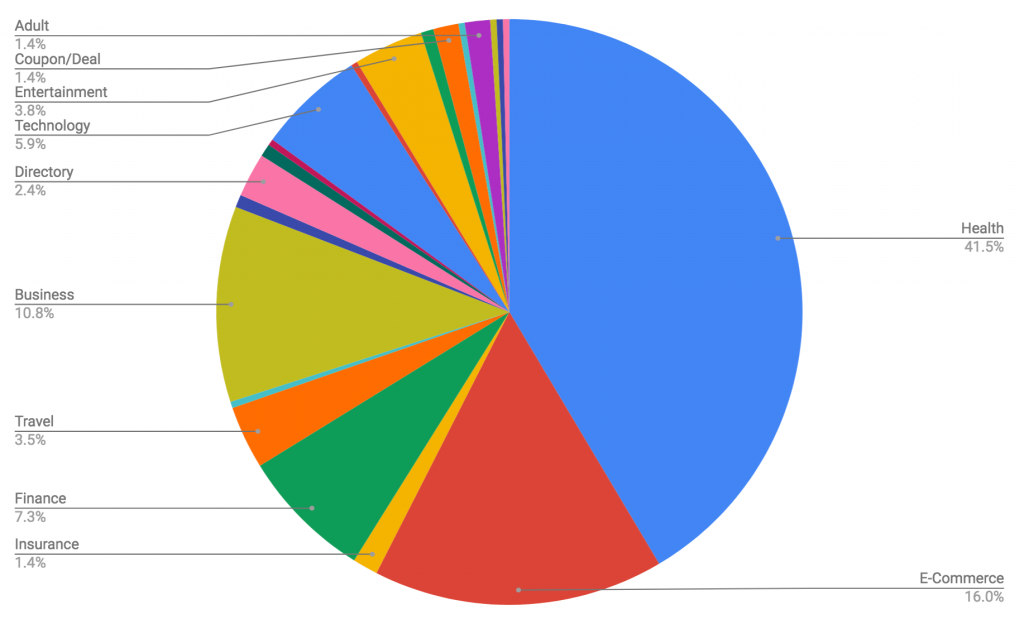
As you can see, most of these websites belong to the health niche.
The info we have from Google itself
According to Google, these updates are executed several times in the same year and they focus on making specific improvements. We also know that this change affects many websites. These changes are made to reward those websites that, according to them, were not getting the traffic they should. You can read the thread in the following tweet:
Each day, Google usually releases one or more changes designed to improve our results. Some are focused around specific improvements. Some are broad changes. Last week, we released a broad core algorithm update. We do these routinely several times per year….
— Google SearchLiaison (@searchliaison) March 12th 2018
What is the solution then? What should I do if my website is affected by this?
According to Google, there is no other solution for the pages that now have a lower ranking, but to continue working on improving their content. With time, it is likely that these contents will get higher rankings again, in comparison with the ones that are currently shown on the first pages. Next, we will verify that this effort may not be enough according to my research.
Update on Google’s Search Quality Evaluators Guide
When we read the Search Quality Evaluators Guide, we can see that section 2.3’s title is “Your Money or Your Life (YMYL) Pages” and that it occupies a significant portion of the guide. As a summary, there’s an explanation on what kind of websites are considered YMYL, the main focus of this update. There are many topics that can fit to this categorization, such as children adoption, road safety, bureaucratic procedures, legislation, etc.
This is why penalties are applied in a granular way. Even thought a website doesn’t deal specifically with the topics of health or finance, it may still be affected by other related issues.
Expertise, Authoritativeness and Trustworthiness (E-A-T)
Another important issue in Google’s Search Quality Evaluators Guide is the following: what are the most important aspects for a website?
- The purpose of the website
- The main content
- The information about its creator
- The reputation of the website and the website’s creator.
These aspects will determine the E-A-T of a website. That is why evaluators are urged to look for this information to determine if the content is legit. Once these aspects are checked, a higher or lower grade is given.
If the purpose of the website is to make money, analyzing the E-A-T becomes even more important. That is why, the following aspects must be analyzed:
- The creator’s knowledge about the main content
- The creator’s authority
- The creator’s reliability
Therefore:
- Medical recommendations must be written by experts or organizations that maintain that quality content up to date.
- The news must be written by professional journalists.
- Etc.
Since this analysis implies an evaluation from a real person, is it possible that Google has managed to automate this process with an algorithm?
In the guide you can read more in detail about what is considered high quality and what the content of the web should look like.
Does SSL affect this update?
Definitely not. There are still websites that rank well without having an SSL certificate, so it seems that is not taken into account at the moment. But it is true that there is a large number of websites with SSL certificate in the top 10. This is due to the many warnings made by Google – webmasters have decided to get their certificate before Google shows their website as an unsecure one. Anyway, in Premium Leads we recommend securing the information of your users by installing your SSL certificate.
Examples of penalized websites
In my case, I experienced this update myself since I have quite some pages about health. Having this large number of websites, I have been able to check which ones have drop and which ones have not, the results being very similar among them. I have analyzed in detail the type of external linking (anchoring), the extension of the contents, the type of search, the competition, etc.
It is difficult to determine why some of them are affected and some others are not. If something is clear to me, it is that the websites that include merely health keywords have been penalyzed. Just to give you some examples, these are the niches that have been affected the most: remedies, cholesterol problems, weight loss, weight gain, pregnancy, diabetes, etc. However, I must say that there are searches that Google does not interpret well enough, and they are not affected by this penalty. That is why these websites still keep their high position in the search engine ranking.
As you can see, the topics are clearly about health problems and solutions. In this case, these are vertical EMD projects that show a total drop of traffic:


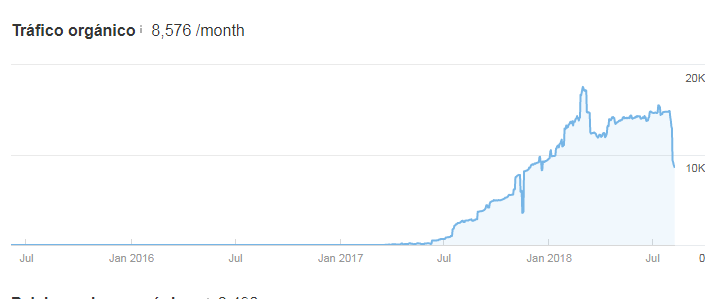
In almost all cases, the drop represents approximately 40% of the traffic.
What happens with slightly larger websites?
Luckily, if you have a larger webpage, some keywords will drop, but the ship will still be afloat, as you can see in these two examples:
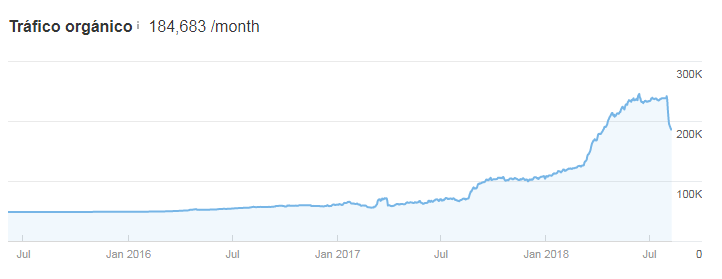
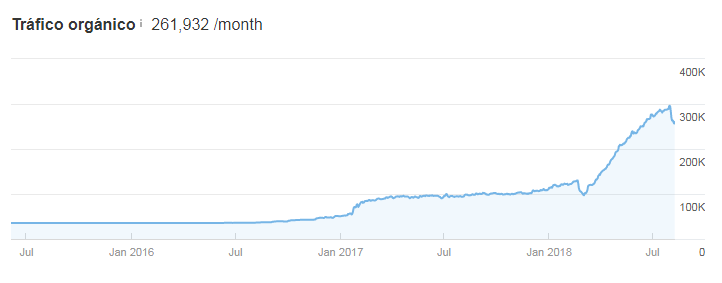
In both cases, there is a huge loss of traffic, but at least the ship is still afloat and we can work on improving those contents that have drop. You also have to be careful when assessing the damage, since the update has occurred in the month of August and the seasonal slump of searches happens during this month and comes back to normal from September on. Not all SEO follows an ABC pattern: we must pay attention to many different factors.
I have also seen more extreme cases, with stronger drops. These drops may have to do with a really fast ranking in a short period of time (and therefore, with trustworthiness).
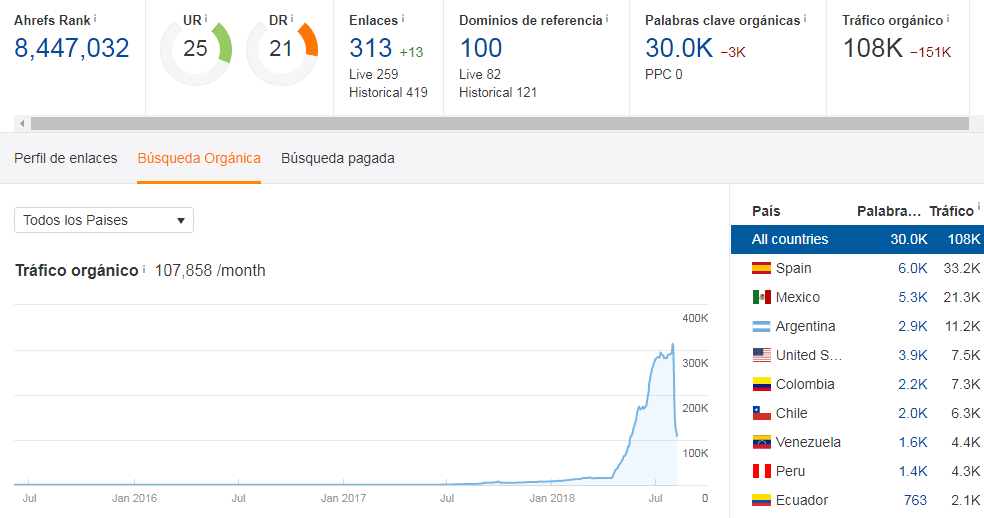
A project like this one can generate a lot of money with any method of monetization. So finding a loss of more than 60% of the traffic in just one day is not easy to accept.
This suggests, as Google says in its guide, that authority can be important to give value to the content that is written. But then you will discover that the high authority websites have also suffered from Google’s scourge.
Examples of penalties in websites with a high reputation level
Now we will review examples that can be checked online and that belong to larger projects with larger teams of professionals generating content.
The case of mejorconsalud.com
Anyone who has been paying just some attention to the health sector knows that this website has been beating the SERPs for many years. Specifically since 2014, when their adventure began.

As you can see, the descent is dramatic and this can lead to a conslusion. If mejorconsalud.com has been talking about health issues for 4 years, how is it possible that Google does not consider that it has a good E-A-T?

It is true that the authorship of the articles is unknown to the reader, but do you think it would be treated differently if a health specialist would have written them?
The case of unCOMO.com
This is a case I particularly like, because you can clearly see how graular this update is. unCOMO’s case deals with different topics and each of them is placed in a different subdomain, so the problem has been isolated, as you can see here:
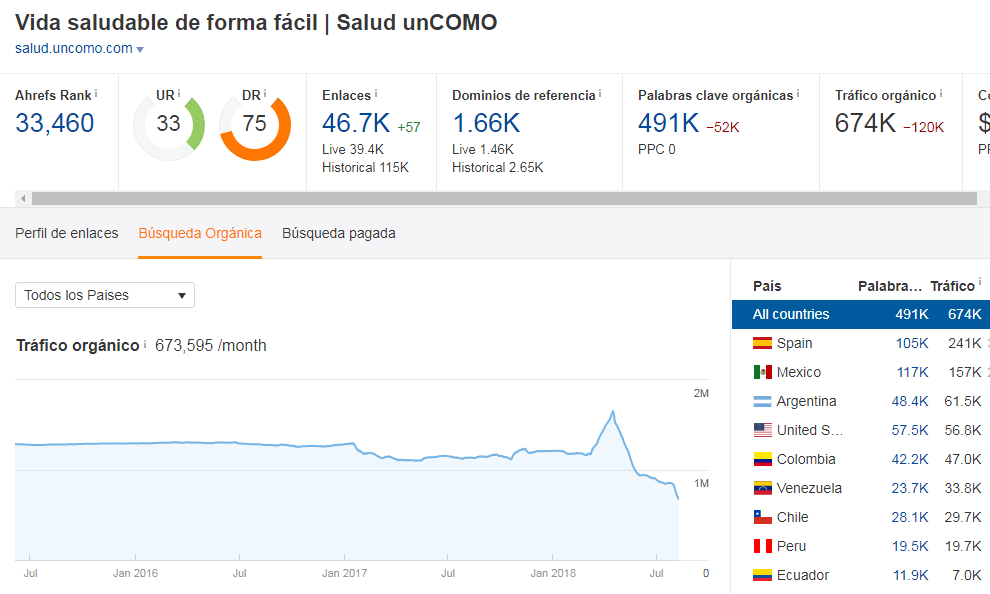
You can observe that since April, the health subdomain just can’t keep up and has been experiencing a continuous drop. However, the other subdomains (like the tech one) haven been rewarded with even more traffic. So it probably has to do with what we have been explaining above – it does not affect the user’s health or finance directly.

Who are the winners then?
Just like life itself, when someone falls, someone rises to replace that position. Now we will analyze some winning cases. With one search, we will illustrate an issue that we haven ben observing for a while and that has been completely solved thanks to this update.
Before this update, when we came to Google to search for “diets”, the SERPs were dominated by webpages such as dietas10, dietas20, comoperderpeso, kiwilimon, etc, etc. But now, a search with such an important volume of traffic is not a field battle to be won anymore, since more realiable websites have risen instead: alimmenta, cuidateplus from Marca, Telva, ElConfidencial, Clara.es, SportLife. is, DKVsalud, etc.
The same goes for the search “remedies”. Gone are the days when websites called remediesxxx were dominating this search. They have simply disappeard off the map. Nevertheless, we must say they have been passing away for a long time. It isn’t something new. This was just the knockout punch.
It is clear that for massive YMYL searches, all small websites will no longer rank the way they did before.
If we opt for lower searches, like “kiwi calories”, we will now find Zespri, a kiwi producer company. It seems sensible, right?
The case of chollometro.com
This website shows offers and discounts. It’s a useful page and it has a large community visiting it. Some of the users just come to this page to comment on the products’ offers.
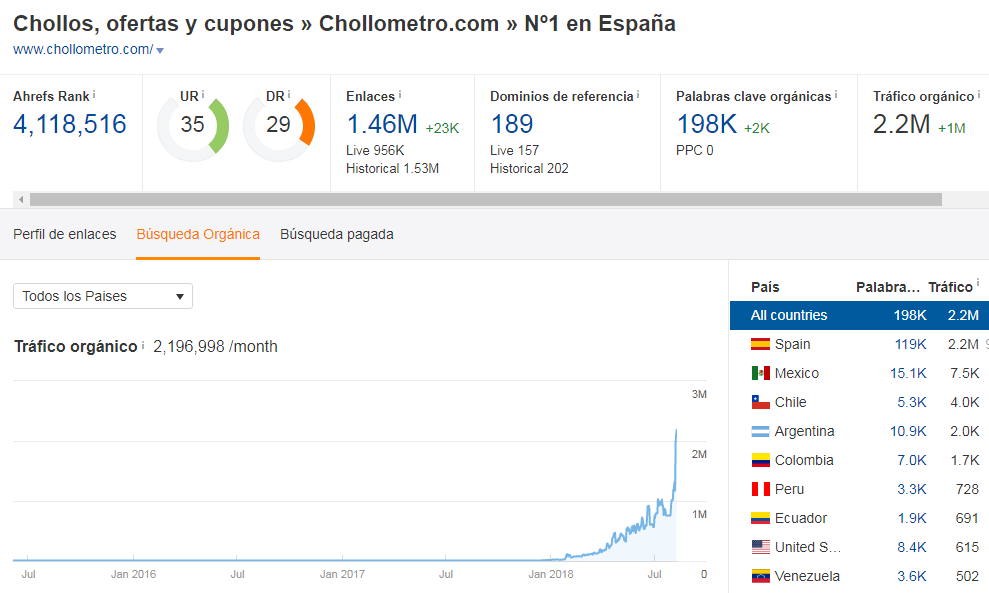
This website follows Google’s intentions: it is useful for the user and it doesn’t put the user’s money at risk.
The case of tuasaude.com
This is a curious case. It was already a very well-known site in Brazil, so they have decided to localize it and expand it to other countries. It is actually quite famous now in Spain. Now take a look at its strategy to make it look trustworthy:
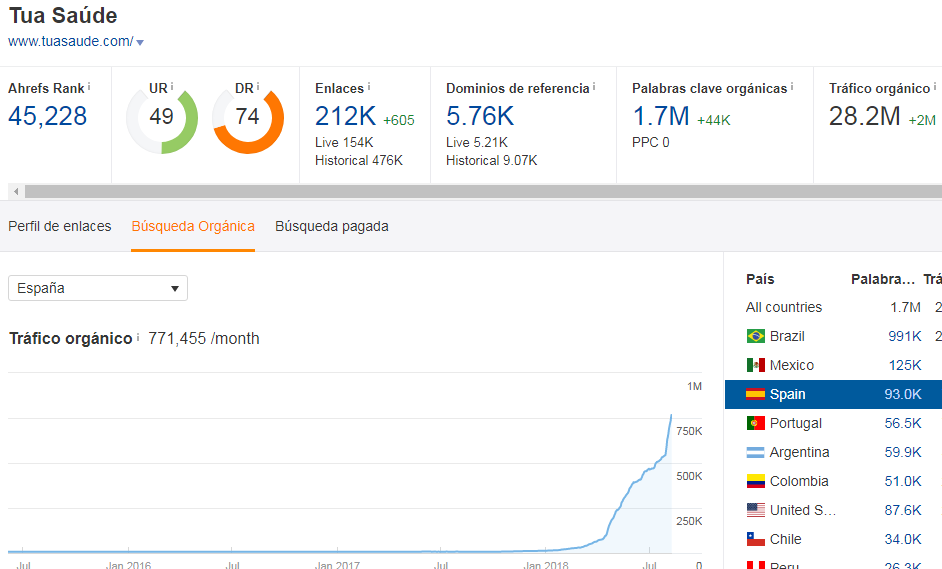
Google needs to automate this task of verification of E-A-T. Look at the author of this text:
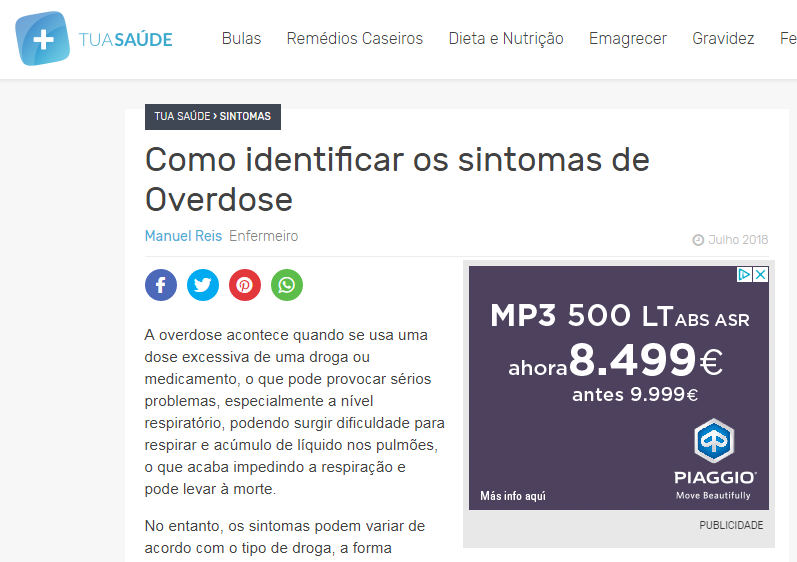
First, we see the name of the author and his job. If we access his personal profile, we see who he is and his career.
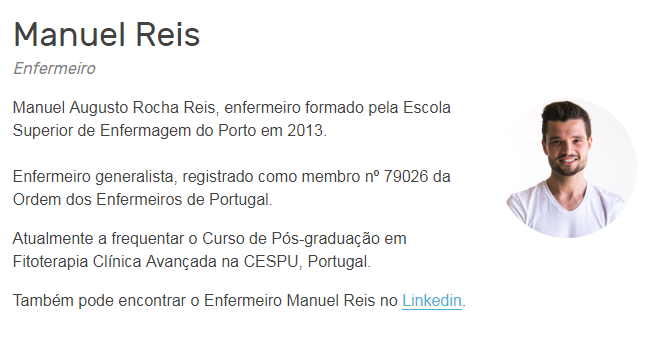
Notice how the information gets more trustful as it links to his LinkedIn profile. Do you get it? I know a lot of SEO managers will try this one for sure. Will it work?
Conclusions
So, what do we do if we have a website like these ones? It seems obvious that it’s going to take a giant effor to lift a website like this one. Unless we can manage to be considered an authority in these matters, it will be nearly impossible to actually make it. I encourage you to share your own experience in the comment section below, whether your website has been penalised or rewarded. We could use even more real cases to reach more conclusions.
